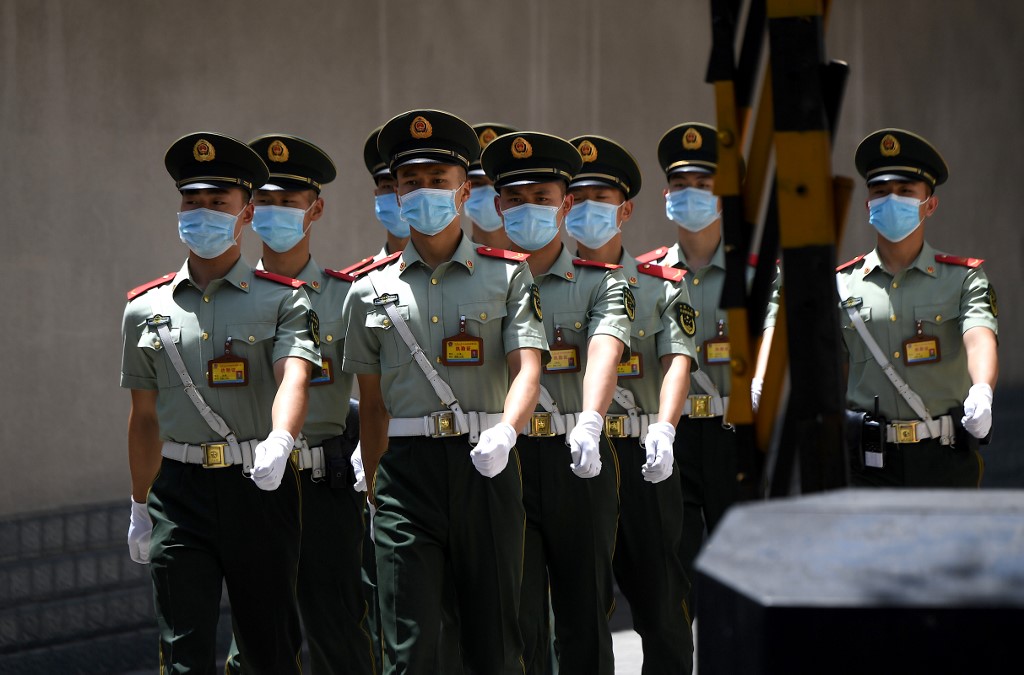(ATF) Economic events
Financial markets will be wary this week as the Sino-US Cold War-style friction weighs on sentiment, after the closure of their respective consulates in Houston and Chengdu. Although neither of the sides have mentioned tariffs or trade in their disagreement, there will be caution in the air after US Secretary of State Mike Pompeo made a speech fiercely critical of China last week and said that the age of inevitability is over.
After the European recovery fund was approved, investors are awaiting a US fiscal stimulus to provide a big impetus to the market. But that wait may be long.
“Even though we continue to think that lawmakers will eventually get their act together, the prospect of protracted haggling in Washington, and a potentially suboptimal compromise package at the end of the process, provides an unhelpful backdrop for equity markets,” Jonas Goltermann, of Capital Economics, said.
Economic data awaited in the coming week will include China’s official PMI numbers, second quarter GDP releases for US, the Eurozone, Germany, Hong Kong and Taiwan. Current data also due on industrial production and trade in Japan, South Korea, and Thailand will help gauge recovery momentum as we head into the third quarter.
The Fed
On Wednesday, policymakers in the US Federal Reserve are expected to keep the federal funds rate at between 0-0.25% while markets will be seeking clues on its next move as the US central bank has shown its opposition to yield curve control and negative interest rates.
As China’s economy returned to growth in the second quarter, analysts will be keen to assess the July update to NBS China PMI data on Friday for signs that the recovery has extended into the third quarter.
“While business sentiment and order book growth have improved in recent months, the June survey also brought signs of a challenging recovery, including an ongoing decline in employment and indications that capacity pressure has remained subdued,” Bernard Aw, the Principal Economist at IHS Markit, said.
But with the hawkish PBoC tone being interpreted as an acknowledgement of better growth momentum, and authorities relaxing movements after broadly containing the outbreak, the performance of the services sector is seen to be improving.
“We think such measures would accelerate the recovery of sectors in recreation, tourism, transportation, hospitality and catering, which roughly accounted for a third of services output, which have lagged behind other services sectors in Q2,” Barclays analysts said in a note.
Fund flows
Investors turned cautious in the week to July 22 even though European leaders agreed on a 750-billion euro rescue fund as geopolitical tensions cast a cloud over sentiment and equity funds saw their fourth outflow in the past six weeks.
EPFR-tracked Equity Funds saw a net $3.7 billion flow out during the week ending July 22 with Emerging Markets Equity Funds accounting for over three-quarters of the headline number. Emerging Markets Equity Funds racked up their 22nd outflow in the past 23 weeks, with the bulk of the money pulled out of Asia ex-Japan Equity Funds coming from those with dedicated China and Greater China mandates.
“Mutual fund investors are also pulling back because of the continued deterioration in US-Chinese relations and uncertainty about the impact of a new security law on Hong Kong’s status as a global financial centre,” said Cameron Brandt, a fund data provider at EPFR’s Director of Research.
But bond funds saw an inflow of $24.5 billion, extending their current inflow streak to 15 weeks and over $300 billion. The inflow was the third largest year-to-date with flows into Asia Pacific, Europe and US Bond Funds hitting three, five and seven-week highs respectively. Global Bond Funds extended an inflow streak stretching back to mid-April.
“The fixed-income dominance continues for another week. IG, HY and government bond funds recorded strong inflows. YTD cumulative flows are now in positive territory across these pockets of the fixed-income world,” BofA Securities said in a note.
High Yield Bond Funds recorded their biggest inflow since early June as they took in fresh money for the 16th time in the past 17 weeks while Municipal Bond Funds chalked up their 11th straight inflow and Inflation Protected Bond Funds their 12th in the past 14 weeks, EPFR said.
Commodities also Sector Funds stood out, taking in over $4 billion as they posted their second largest weekly inflow since EPFR started tracking them. Gold Funds accounted for half the headline number while dedicated Silver Funds also enjoyed record-setting inflows.
Economic data calendar


LAST WEEK’S RATING CHANGES


























